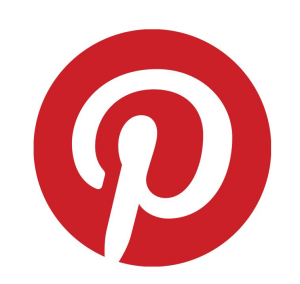Blog

Congratulations! You've successfully made it through the first full week of 2014. By now you've (hopefully) recovered from the holidays and are getting back into the daily grind. For this week's blog post, we've put together a small round-up of articles we found interesting this week, along with our own thoughts and commentary. Enjoy!

2013 was a huge year for social media! We've rounded up some of the biggest social media moments from this year.
1. Oreo tweeted during the Super Bowl. As the Baltimore Ravens and the San Francisco 49-ers were going head-to-head in this year's Super Bowl XLVII, a power outage occurred (earning the game the nickname Blackout Bowl). Brands quickly took action to use the blackout to their benefit, but none did it quite as well as Oreo. Regardless of who did it best, the blackout set a new standard for brands to produce extremely timely and relevant content. We saw this continue throughout 2013 as brands drew inspiration from current events like the royal baby, season finales and award shows.

It’s that time of year again – the time of year for ugly Christmas sweaters, photos of crying infants sitting on Santa’s lap, and that one “Oh, crap” moment that you have when you realize you forgot to pick up a gift for the #1 person in your life. Ah, the holidays. Well, we’re here to spread a little holiday cheer to you! Check out the list that we compiled of the Five Holiday Moments of 2013 That Made Us Smile.

You've probably noticed the onslaught of all things holiday-related lately. As soon as Halloween is over, if not before, retailers begin gearing up for the holiday season. The Christmas music starts, the fake Santas appear and the quest for the perfect Christmas gift begins. As retailers begin gearing up for the holiday season, so do marketers. But these days there's a lot more pressure on social media marketers as well to prepare for the holidays. Why? Because social media plays a HUGE role in people's purchasing behavior.

Your social media platforms are not static entities. Like most things in life, they need to be spruced up every once in awhile. If your business is in a rut with your social media presence or has just been flat-out neglecting them, here are a few ways to liven things up.
We have a new question for our Frequently Asked Questions series!
"How many social media platforms do I need to use? How do I choose which ones are best for my business?"
In general, if your business is going to take the leap into the social media world, you need to be ready to set up, maintain, and monitor at least 3-4 social media platforms. You’ll have to be accessible to your clients through a variety of channels to secure your legitimacy and credibility. Also, it can be fun, I promise!
As for choosing which social media platforms are best for your business, I’m going to start off with the answer no one ever wants to hear: It depends. Every business is different, and the number and type of social media platforms you decide to use should be strategically thought out based on the nature of the goods/services that you provide.
I’ve compiled a list of what I believe are the most useful social media platforms for businesses, with nutshell descriptions for each – because I know you don’t have time to sit here are read every fact and statistic out there for social media (but if you want to, here’s a good place to start). So, here we go:
Facebook: Roughly 1 billion active users, used for sharing a wide variety of content including status updates, videos, and photos. Typical post cadence is 5 times per week.
Twitter: Designed for quick, 140-character max updates. 550 million active users. Can post more than once per day (not to exceed 8 times a day).
Pinterest: Heavily visual, fastest growing social media site in the world. Takes the concept of traditional “pin boards” and makes it virtual. We recommend at least weekly usage.
YouTube: Second most visited website in the world. Made to view/share video content. Update weekly or bi-monthly.
Google Plus: Gaining traction due to Google associating search engine rankings to profile pages. Made to post a variety of content; photos, videos, status updates, and links.
Instagram: Another photo sharing site. Take a picture with your smartphone and use cool filters for effect. Displays photos in news feed format, one at a time.
LinkedIn: Strictly professional network, built for recruitment/job searching. Has company page option that is used to communicate with followers.
To choose which social media platforms are best for your business, take a look at what your business has to offer. For example, a restaurant might consider using Facebook, Twitter, Pinterest, and Instagram. The strategy behind that?
- Facebook for the multi-functional post ability
- Twitter to announce daily/weekly specials in short form
- Pinterest to visually categorize their menu options and make other pinners salivate at their computer screens
- Instagram to show off new menu item additions in a unique way (i.e. use cool filters to make delicious food photos look even better)
If you know you need to establish your business on social media, but don’t have the time to invest, PLEASE give us a call! Our marketing department thrives off social media, and we’re always staying up-to-date with the latest and greatest platforms/features. Don’t fight it any longer… get social and have fun with it!
Written by: Jocy Vuiller

Most of us at Addison Clark HQ are avid fans of The Big Bang Theory (just revealed to be the most expensive television show for advertisers – because it’s the best! Duh!). Even if you don't watch the show, you have likely heard a thing or two about the character Sheldon Cooper. He is a genius with an IQ of 187, but he struggles with social situations - which is a combination that makes the show quite entertaining . He may be egotistical, awkward, and love to throw around big words such as "axiomatic," but when it comes down to it, he does have a few useful qualities that we can use in our professional lives.
Let’s take a look at the example of Dr. Sheldon Cooper, B.S., M.S., M.A., Ph.D., Sc.D:
Have a routine. Sheldon has his entire group of friends on a schedule of weekly activities. For example, one night of each week is Pizza night, one night of the week is spent at the Comic Book Store, etc. His obsession with routine may be to a fault, but that doesn’t mean we can’t learn a thing or two from it! Having a routine in your workday can keep you on track and productive. For example, when I get to the office I like to check emails first, then make a to-do list for the day. However, the most important thing to remember when developing a routine that works for you is that no day is the same. While this is one fact that Sheldon would freak out about, if you can accept that unexpected tasks are going to happen, you'll be up to any challenge that awaits you.
Be confident. On many occasions throughout the show, Sheldon has begun sentences with, “When I win my Nobel Prize…” There’s no if, there’s no shred of disbelief in his voice – he is certain that he’s going to get that prize during his lifetime. Like Sheldon, we should have confidence in ourselves in order to reach our goals. Believing in yourself also gives your coworkers and employers a reason to believe in you, which will make you shine in the workplace.
Speak your mind… This is something that Sheldon has no problem with. Anytime he disagrees with his best friend and loftmate, Leonard, he doesn’t hold back (and he often references their “roommate agreement,” a signed contract outlining acceptable and unacceptable behavior in their apartment). Picking fights in the workplace is NOT cool, but thoughtfully expressing your opinions on certain matters can work in your favor. No matter what your role in your company is, chances are that at some point, employers and clients will look to you for advice in some capacity. You’ll need to be ready to share your thoughts in order to seal a deal, advance your career, or simply carry on a conversation.
…But apologize when you’re in the wrong. Sheldon made a big boo-boo once that affected the future of his friend Howard. He told an FBI agent about a mishap with the Mars Rover that Howard was involved in, which caused him to miss out on a big opportunity to work for the Department of Defense. Sheldon spent the latter part of the episode apologizing to Howard and trying to convince the FBI that Howard was right for the job. The point is, we all make mistakes. Taking responsibility for those mistakes makes you trustworthy - and more than likely, it’s not going to turn out as bad as you think it is.
Have some fun! Many of The Big Bang Theory’s funniest moments involve Shelly breaking away from his serious side and having fun. While he is a genius, he also enjoys jokes and pranks (even though most of the jokes are not funny to others, and the pranks- like foam in Barry Kripke’s office- tend to backfire). I’m not saying to go out today and plan a big prank for your coworkers, but I think there’s value in laughter in the office. Did you find a funny video on YouTube last night? Gather your work friends around the computer and share – or at least send out the link so they can enjoy! Bazinga!
And most importantly, be yourself. Sheldon loves comic books, the Doppler Effect, video games, The Flash, and trains. The thing I most admire about him is that no matter what weird quirks he may have, he doesn’t hide who he is. Always be true to who you are, and you’ll get wherever you want to go in your career and in your personal life.
Bonus: 5 MORE Tips from Sheldon Cooper -
- When someone is in distress, offer them a hot beverage. If they’ve been drinking, that beverage is coffee. And serve it with a smile.
- Stay safe in the shower by purchasing adhesive, whimsical duck stickers for the bottom of the tub.
- If you’re going to be drinking wine and giving a speech, make sure there are no cameras around. You just might end up on YouTube with no pants.
- Don’t listen to Wil Wheaton! He spreads lies about his Meemaw to win card games!
- When someone is sick, help them into bed, tuck them in, and sing “Soft Kitty.” Works every time.
Written By: Jocy Vuiller
*P.S. - I'm a Marketing Manager, not a Human Resources manager or business owner; these are just lessons I've found helpful in my career. Take it as you will!
What do you do at Addison Clark?
My official title here at Addison Clark is Web Developer/IT Manager, so that generally means if there is any kind of computer related issue that falls on me to tackle. This can range from the obvious web development stuff to trouble setting up emails on smart phones.
What’s your favorite thing about your job?
That would definitely have to be the people of Addison Clark. Even if everything else is great about your job, the people are the difference between liking and loving it.
Name three things you’ll find on your desk at work.
Well, I am assuming you don't mean the obvious mouse, keyboard and monitors trio. I would be remiss if I didn't start with the picture of my wife & I. That actually leads me to the next item a small, hand carved Hawaiian Koa tiki mask; which was a gift from a friend who had recently been to the islands. Not being a vain man, I have placed it strategically over my face in the picture, so that way when I look at the picture all I see is her. The last item would have to be my smart phone, I take it everywhere because without it I feel very disconnected from the world. There is just something about being able to connect with just about anyone, anytime just feels right.

What do you do at Addison Clark?
My job revolves around writing – from blog posts to web copy to 140 character tweets. On a daily basis, I deal with social media marketing, email marketing, copywriting and blogging – a writer’s dream job.
What’s your favorite thing about your job?
I love dealing with social media on a regular basis. It’s fun to see customers interacting with brands they love. I also love being able to articulate our clients’ stories using social media.
Name three things you’ll find on your desk at work.
A framed picture of me and my husband on our wedding day. We got married in May of this year and I still haven’t tired of looking at our wedding photos again and again (…and again), so having this on my desk makes me particularly happy. You’ll also find a mug for hot tea and plenty of Sharpie pens.

Five years ago Pinterest didn’t exist. It wasn’t a word, a thing, or even a thought. In the last few years, though, the visual social media site has become one of the most popular go-to platforms in the world of event planning.
With over 25 million users today, most of whom are female, Pinterest has become a hot spot for wedding and reception ideas. In fact, Pinterest estimates that there are tens of thousands of user-created wedding boards across the site, many of which are created by women who aren’t even engaged or planning a wedding.
Like millions of other users, I turned to Pinterest for ideas and inspiration when I started planning my own wedding this year. Throughout the process, I realized that there are many ways in which businesses can utilize Pinterest in the same way that brides-to-be do. Whether you’re planning a wedding or an office event, Pinterest can be a very useful planning tool.
One of Pinterest’s best qualities is that it is visual. By pinning a variety of pins onto a single board, I was able to visualize how details would look together. It was also helpful to have all of my ideas in one place where I could easily share them with family members and vendors, so that they too would have a visual of the look and feel of the event.
Likewise, Pinterest is a great resource for businesses to use in order to gather feedback on projects. Instead of having long meetings to brainstorm and discuss, why not use a visual approach? Pinterest boards are a great way for employees to actually see their ideas coming together.
Another useful aspect of Pinterest is that everyone can contribute. I come from a large family so it was no surprise that everyone wanted to offer their ideas and suggestions during the wedding planning process. Pinterest makes it easy to let others in on the plan. I invited my mother and sisters to pin to my wedding boards. This way, when they came across a cute decor idea, hairstyle, or bridesmaid dress they could pin it themselves.
In a business, getting the staff involved in major decisions is a great way to let them share their thoughts and opinions. Encourage employees to pin their own ideas and suggestions to a particular board.
Pinterest is a valuable resource when it comes to searching for wedding vendors. One of the best things about having so many brides on a particular social media site is that they’re able to share their caterers, DJs, wedding officiants, etc. Many pins are linked to these vendor’s websites, which allowed me to contact them directly.
The next time your business hosts an event, consider creating a board to showcase the event. You can pin pictures of the event’s key speakers and link them to your Web site or to those of the speakers. You can also give your sponsors a little extra exposure by creating a board filled with your sponsors’ products and services. Not only does this showcase the types of relationships your business has, but it provides a great resource for others businesses or interested clients.
Finally, remember, that Pinterest is a public space. I was cautious about pinning all of my wedding ideas on Pinterest, because I didn’t want wedding guests to see all of my ideas before the big day. Pinterest solves this problem by offering Secret Boards that are hidden from the general public. You’ll still have access to all the great features Pinterest offers, but you can keep your ideas on the down-low until the time is right.
Happy pinning!
Subcategories
Like what you read? Want to see more blog posts?
Have a marketing question? Want to talk?


